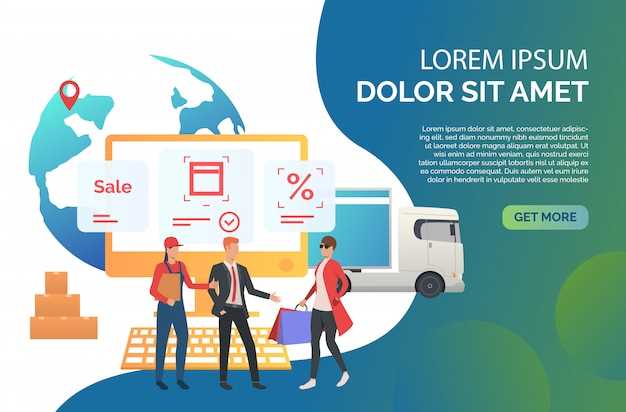Start by auditing your transport network and choosing a cloud-based TMS that centralizes data from carriers, brokers, and customers. For example, a unified software platform can break bottlenecks and reduce manual entry by 40–60%, especially when it links lanes, rates, and service levels into a single workflow.
An effective TMS enhances visibility across chains and helps navigate a complex network by turning raw data into actionable analysis. It addresses delays and capacity gaps by enabling dynamic carrier selection, consolidated invoicing, and real-time ETA adjustments.
Bringing dispatch, billing, and order data into one view simplifies operations and reduces the number of phone calls between shippers, brokers, and customers.
Define KPI and address the top bottlenecks in supply and demand with a data-driven plan. In a typical rollout, prioritize route optimization, carrier onboarding, and automated alerts, aiming for a 15–25% reduction in empty miles and a 5–10 point gain in on-time performance within 3 months.
To scale, connect mobile teams and back-office workflows through a single interface, and validate changes with a rolling dashboard and weekly reviews. In a 90-day pilot on two core lanes you can observe a measurable benefit in load utilization and transit times.
Define Your Transportation Objectives: Cost, Service, and Compliance Goals

Set three explicit objectives: reduce total transport cost by 12% year-over-year, improve on-time service to 98% by consolidating lanes, and achieve full compliance across all carriers and lanes by Q4. Publish these targets in blue dashboards across the enterprise, with owners and milestones attached for your company, which aligns planning with execution and keeps teams focused on the most impactful outcomes, while allowing for unimaginable improvements once data guides decisions.
Cost discipline hinges on data-driven comparisons between carriers. Create a cost model leveraging published rate cards and the latest fuel and accessorial data. Organizing data from sensors on shipments and dock activity reveals waste, idle time, and detention charges. Use these insights to identify the most impactful savings across chains and across modes, then implement lane-level consolidation to increase utilization and reduce empty miles. Additional savings come from cross-functional collaboration across the enterprise.
Service objectives focus on predictability and responsiveness. Create a consumer-centric service map tied to consumers’ expectations; use data from sensors and telematics to monitor last-mile performance. Implement proactive exception handling and automated alerts published to blue dashboards so planners can re-sequence shipments in real time. Avoid manual data entry by relying on sensors and automated feeds, which increases reliability for most critical orders. Automated feeds reduce errors without manual intervention.
Compliance and risk management require governance. Align policies with latest regulatory requirements for transport, labeling, and data privacy. Tag every shipment with compliance attributes in the data model and track carrier certifications, insurance limits, and hazardous materials handling on dashboards across the enterprise. Establish an approvals workflow for deviations from standard routes or service levels so the organization stays within limits while pursuing improvements.
Implementation plan should be phased: phase 1 define targets and publish; phase 2 deploy sensors and dashboards; phase 3 run pilots; phase 4 scale across the enterprise. Track most relevant KPIs such as cost per mile, on-time rate, and compliance rate; refresh targets quarterly based on data; review with stakeholders to maintain momentum.
Map Your Current Processes: Carrier Selection, Routing, and Freight Payment Workflow
Start by documenting your current processes with a visualization that maps carrier selection, routing, and the freight payment workflow to reveal actionable gaps and quick wins. This ready map provides a baseline for improvements and sets expectations for the team.
Within their operations, define the core functions for each step: selection criteria, routing logic, and payment approvals. Clarify who owns each task, the data inputs, and the type of decisions that occur at every handoff.
Capture specifics of data sources, such as carrier performance, lane history, rate cards, and payment terms. Formerly fragmented data now flows into a unified view that enables faster decisions, reduced errors, and clearer accountability.
Build a current-state map that shows how requests flow from origin to booking, routing decisions to shipment status, and invoices to settlements. This map makes dependencies visible and supports the project plan, risk assessment, and stakeholder alignment.
Carrier selection: implement a decision matrix that scores service level, capacity, cost, risk, and sustainability. The matrix should be ready for ongoing updates and enables apples-to-apples comparisons across carriers within the sector and across modes.
Routing: define modes (truck, rail, ocean, intermodal) and constraints, compare options by transit time, reliability, and cost, and attach a visualization that clearly shows trade-offs. Enhanced routing decisions resolving discrepancies rely on standardized data to improve performance.
Freight payment: standardize data intake, automate invoice matching, and set ready-to-pay thresholds. Track payment cycle times and invoice accuracy to reduce late settlements and disputes.
Visualization and governance: build a live dashboard that tracks capacity within sectors, carrier performance by lane, and operational bottlenecks. This visualization facilitates rapid responses to exceptions, takes input from consumers, and informs internal teams while keeping operations efficient and improved.
Take feedback from consumers to refine the workflow and continuously reduce friction in handoffs.
Key Metrics to Track
On-time performance, load-to-truck utilization, and average transit time by mode provide a fast read on reliability. Monitor cost per mile, total landed cost, and detention or demurrage to spotlight efficiency gains. Track error rates in data transfer and invoice matching, along with days payable outstanding to measure cash flow health. Use these specifics to drive a strong improvement project and align stakeholders.
Implementation Steps
Step 1: gather current-state data from transport orders, rate cards, and payer terms; Step 2: create the cross-functional team and assign owners for selection, routing, and payment; Step 3: design the current-state map and a target-state plan with clear milestones; Step 4: pilot changes in a representative sector or lane, monitor performance, and iterate; Step 5: roll out improvements company-wide, with a regular cadence for reviewing results and adjusting the workflow.
Assess TMS Core Modules: Planning, Execution, and Analytics
Begin with data standardization across inputs, lanes, and service levels to enable accurate scenario comparisons and faster decision-making. Define targets for each module and assign owners to ensure cross-functional alignment with customers and operations.
Σχεδιασμός
Planning sets the foundation by modeling capacity, routes, and constraints. Map lanes, service windows, and carrier options, then run scenarios to compare cost and service trade-offs. Build a single source of truth for forecasts and capacity signals, so teams across areas work from the same plan. Assign accountability for changes to the right role, and keep change records simple yet auditable to avoid misalignment.
Execution and Analytics
Execution translates the plan into daily actions: load assignment, dispatch, and status updates. Monitor milestones, flag deviations, and escalate to the responsible stakeholder when needed. Use standardized workflows to capture outcomes from each shipment, supporting rapid learning and continuous improvement. Analytics converts execution data into dashboards and reports that reveal on-time performance, transit times, and lane-level efficiency. Compare planned versus actual results to identify differences, drive improvements, and inform future planning decisions.
Evaluate System Integrations: ERP, WMS, Carriers, and Data Exchange
Start with six steps to assess ERP, WMS, and carrier interfaces to define data exchange needs and set measurable goals. Create a rating rubric for data quality, latency, error rate, and maintenance effort, then benchmark across departments to ensure alignment with corporate objectives. Choose a vendor that provides clear API documentation, robust error handling, and a user-friendly interface to reduce adoption time and training costs. For commercial processes, document the expected ROI and payback period, then compare options based on total cost of ownership.
Map data models across ERP and WMS to reduce complexity and avoid custom scripting. Use standard formats such as EDI, XML, or JSON and pair them with RESTful or SOAP APIs. Invest in mapping algorithms that translate item, order, and inventory fields consistently, then document field provenance in a single file repository. Different system combinations require tailored connectors; aim for reusable middleware that minimizes code and increases stability, making integration easier and easily maintainable over time. Then run end-to-end tests against real-world orders to verify accuracy and speed. However, ensure the integration respects security constraints and avoid duplicating access controls already managed by enterprise identity providers.
Evaluate carrier connections: direct API links, EDI exchanges, and managed services. Commercial viability increases when you support real-time rate shopping, transit ETA updates, and automatic container tracking. For example, a mid-market retailer cut manual invoicing by 35% after implementing API feeds from three carriers. The approach provides reliable data pull in under two seconds in 99% of requests, depending on network conditions. Build a tolerant retry policy to handle temporary outages, and log events to a central file for auditability.
Assess data governance and security: encryption at rest and in transit, role-based access, and vendor SLAs. in california, privacy rules require strict controls on personal data and clear data lineage. Plan for increasing data volumes and scalable pipelines to support forecast-driven replenishment. Evaluate whether carrier options store logs locally or in the cloud, where files are hosted, and how access is controlled. Align with corporate IT policies to minimize risk and ensure operating resilience during peak season.
As a practical recommendation, rate each integration option against four operating KPIs: data quality, timeliness, reliability, and ease of maintenance. Treat this topic with cross-functional involvement across IT, logistics, and procurement, then base the final choice on a balanced score that considers complexity, cost, and potential for future growth. Keep a single file that contains mappings, configuration settings, and change history to simplify onboarding and audits as teams scale.
Estimate TCO and ROI: Licensing, Implementation, and Ongoing Costs
Start with a practical, structured model that captures licensing, implementation, and ongoing costs over a 3- to 5-year horizon. This approach delivers transparency for stakeholders and highlights inefficiencies that a TMS can eliminate, helping businesses become more cost-effective and ready for future challenges. This topic also clarifies how the system handles exceptions and where questions remain as you organize data across statuses and teams. Implementation takes cross-functional alignment; always tie the TCO model to measurable outcomes.
Licensing models and cost structures
- Licensing options: SaaS, on-prem, or hybrid; choose between per-user, per-transaction, or tiered plans; forecast license fees over 3–5 years and identify a cost-effective path; record detail for each line item to improve transparency.
- Implementation costs: map scope, data migration, integrations, and training; mid-size projects typically range 100k–250k, with a 15–20% contingency to cover longer integration timelines.
- Ongoing costs: hosting or maintenance, support, upgrades, data storage, and security; expect 40k–150k annually, scaled by users and the number of connected systems.
- Customization and integration effort: customized workflows and multi-ERP setups can add 20–40% to standard packages; plan for behavioral change and user adoption to reduce risk.
- Compliance and security: include periodic audits and monitoring; allocate 5–8% of license spend annually for compliance and risk checks.
ROI and cost-benefit analysis

Identify monetizable gains from the TMS: labor reallocation, delivery reliability, reduced penalties, asset turnover, and lower inventory carrying costs. Build a 3–5 year forecast with a single data source to support decisions, enabling transparency across statuses and teams.
- Example assumptions: SaaS license for 20–25 users at 12,000 USD per year; implementation 180,000 USD (one-time); ongoing support 40,000 USD per year.
- Estimated annual benefits: labor savings 350,000; delivery improvements and penalties avoidance 180,000; inventory and asset utilization 120,000; total 650,000 per year.
- Year 1 result: total costs = 12,000 + 180,000 + 40,000 = 232,000; net = 650,000 – 232,000 = 418,000; payback around 4.5 months; ROI approximately 180% in year 1.
- Sensitivity check: if license grows to 25,000 per year and benefits fall to 520,000, ROI drops and payback extends to 9–10 months; if adoption accelerates and benefits exceed estimates, ROI can reach 300% within 2 years.
To maximize ROI, run the model with a longer horizon and update it quarterly as you gain data from pilots and live operations. The result should be customized to your operation, used by finance and operations, and organized around your delivery networks and statuses. Prepare for questions about adoption risk, data quality, and how the model scales with future digital workloads.

 Transportation Management in Logistics – The Complete Guide for TMS">
Transportation Management in Logistics – The Complete Guide for TMS">
